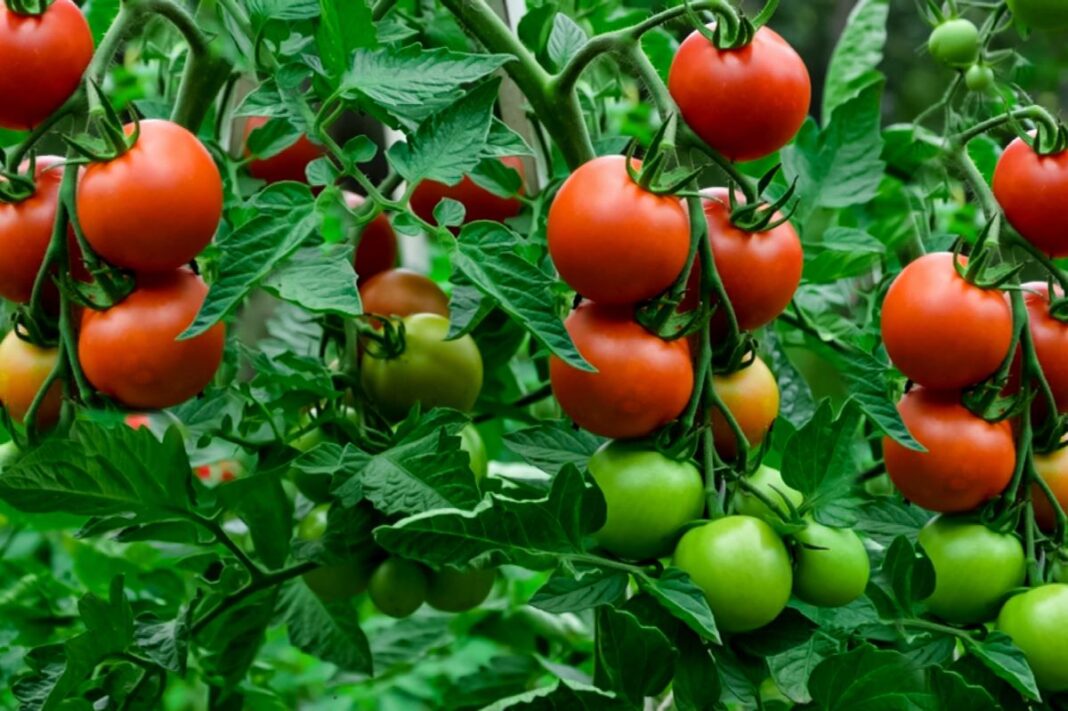A recent study claims that by 2035, climate change could be pushing food prices up by between around 1% and 3% every year. By 2060, heat-related issues may increase prices by as much as 4.3% annually.
By Cathrin Schaer and Emad Hassan
Extreme heat, or heatflation is raising food prices everywhere. Researchers say that, in the Middle East and other hotter regions, the costs will be even higher.
For example, prices for foods such as tomatoes regularly change at local markets depending on how the crop has been impacted by weather or drought.
Tomatoes are particularly impacted by heat waves because in places like Iraq, they are often grown and sold by smallholder farms, which don’t have any way of processing or refrigerating the crop, therefore perishables must be sold straight away.
Iraq is not the only Middle Eastern country where climate change is impacting food prices in such an immediate way.
Last September, onion prices in Egypt tripled in price to 35 Egyptian pounds ($0.74, €0.68), compared to earlier in the year. Egyptian officials says that onion traders had caused the problem and they temporarily stopped onion exports. But onion growers themselves said a heat wave had reduced the harvest and the price rise was primarily due to this, alongside increased costs of production.
In Morocco last year, tomato growers suffered similar problems when an unexpected frost arrived after an unseasonably early spring. Tomato crops had blossomed too soon and the cold killed off new fruits. So where a kilogram of tomatoes previously cost 5 Moroccan dirhams ($0.50, €0.46) at local markets, it more than doubled to 12 dirhams. The Moroccan government then placed a partial ban on tomato exports.
This year, after the export ban was relaxed, tomato prices went up again and one local grower told Morocco’s Journal24 that local farmers were giving up tomatoes because of the increased costs involved and the water needed.
An economic expert from Rabat Al Tayeb Ais claims that today, a kilo of tomatoes costs 18 dirhams.
“For locals this is huge because of the rise in prices, low-income families are no longer able to get the fruits, vegetables and meat they needed,” says Al Tayeb.
All of these price rises come under the category of heatflation, a phenomenon the World Economic Forum defines as steeply “rising food prices caused by extreme heat.”
According to University of London Professor Ulrich Volz, “There is no question that heatflation exists”.
“The empirical evidence is clear that climate change is having increasing impacts on agricultural output and food prices around the world,” says Volz.
In a study published in March, researchers from the Potsdam Institute for Climate Impact Research and the European Central Bank looked at how heatflation might impact the cost of food in the future.
The study investigated prices of food and other goods in 121 countries since 1996. Researchers concluded that by 2035, climate change could be pushing food prices up by between around 1% and 3% every year. By 2060, it could be increasing them by as much as 4.3% annually; most of that increase would come from heat-related issues rather than excess rain or flooding.
The researchers’ estimates also showed heatflation was likely to have an even more dramatic affect in regions that were already hot, such as the Middle East, Africa and South America.
A few inflation percentage points may be a lot when it comes to European or North American food prices. For example, euro zone inflation was at 2.4% on average, during March and April. But in some Middle Eastern countries, overall — or headline — inflation is already in double and even triple digits. For example, in Egypt headline inflation is currently running at over 30%. Food price inflation is at over 40%.
According to a recent paper by the IMF, other factors beyond heatflation cause the kinds of inflation rates seen in Egypt, Lebanon, Syria, Iran and Turkey include “budget deficits, high levels of public debt, currency devaluation, and dangerous levels of inflation” as well as conflict and war, and the dependency of some countries on food imports like wheat.
“Of course, there will always be other factors impacting on inflation, including macroeconomic developments and the exchange rate. But food price inflation may indeed become more important,” says Volz.
For the time being, experts say it’s important to acknowledge heatflation because rising food prices usually most affect the most vulnerable people in low-income households. Lack of nutrition may also cause long-lasting developmental problems for children.
Unfortunately, just as with the topic of global climate change in general, there are no easy solutions to remedy heatflation.
“To prevent the worst from happening, Middle Eastern and North African countries, especially the oil producers, need to play their part in climate mitigation. Countries need to invest much more in adaptation and resilience in the agricultural sector, conduct climate risk analyses and develop suitable adaptation strategies,” says Volz.
Notes from the Editor: This feature has been edited from its original publication here.
Hey! Brothers and sisters while you’re here! If you like our content and want to help MNATION in uplifting the ummah, please share and subscribe, it’s free! If you’re feeling extra generous, we welcome contributions for just 1.99 per month!






